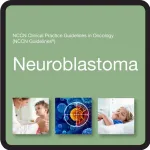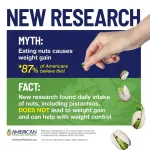(Press-News.org) COLUMBUS, Ohio – After serving decades in prison, Rwandans convicted of crimes of genocide returned to their communities articulating a “narrative of redemption,” saying they were good people, despite their past crimes.
And they were hopeful about their prospects for reintegrating into their communities.
Many of these former prisoners had been convicted of murder, often of their own neighbors, connected to the 1994 genocide in Rwanda. But they said they had changed – even while minimizing their role in the killings.
In a new study, researchers conducted in-depth interviews with 129 former prisoners about four months after they returned to their communities.
“They would be very clear to tell us they had become better people, and they were no longer like they had been before, drawing a very stark line between their past selves and present selves,” said Hollie Nyseth Nzitatira, co-author of the study and professor of sociology at The Ohio State University.
Nyseth Nzitatira conducted the study with John Gasana Gasasira of the University of Rwanda. Their results were published online recently in the American Journal of Sociology.
The Rwandans interviewed for the study were among the roughly 250,000 civilians sentenced to prison and community service camps for crimes of genocide. Many of them had joined killing groups that had targeted members of the Tutsi ethnic group. Up to 1 million people were killed in the genocide.
The researchers had interviewed the same people prior to their release. At that time, many of them were nervous about going home, unsure of how they would be received, Nyseth Nzitatira said.
“Originally, I did not think they would be welcomed,” she said.
“They had been convicted of what is often thought of as the worst crime imaginable, and they did it against their neighbors. The trials had taken place in their communities, and there was no way to escape the stigma of what they had done as they moved back to those same communities upon finishing their sentences.”
But the researchers found that many of the former prisoners were greeted with “gestures of openness” that signaled that people were willing to engage with them.
“That doesn’t mean they were welcomed with completely open arms or that everything was fine, but there was this tentative acceptance that suggested community members were open to having them back in the community,” she said.
Three-fourths of those incarcerated for genocide returned to a spouse or partner, and the rest to other family. Many of them found that their family had prepared a meal for them. Other community members would often stop by and offer food and drink or even money.
Such seemingly small interactions carried great weight to the formerly incarcerated individuals, Nyseth Nzitatira said, making them feel as if they had an opportunity to rejoin their community.
Not all were welcomed, however. Women were much less likely than men to be incarcerated for genocide. Women who were imprisoned found the scale of their welcome home was much smaller than that of men.
Most women were not married, and they tended to have far fewer visitors than men did when they returned home.
“It was a much less positive experience for women who came back to their communities,” Nyseth Nzitatira said. One reason may be that women are seen as more nurturing than men, and crimes of genocide go against that expectation.
For those former prisoners who did receive a warm welcome, it was a key to their identity shift, the research suggested.
Findings showed that 79 of the 85 respondents who said they had changed and were now good people had experienced a warm welcome from families and/or their communities when they returned from prison.
“It was this welcome that helped them see themselves as better people, because we did not see that positive shift when we interviewed them while they were incarcerated,” Nyseth Nzitatira said.
“They felt they could now resume their lives as Rwandan citizens and shed their past selves.”
In their interviews when they were back home, the former prisoners were eager to talk about not only how they had changed, but also about how they had previously been good people, too.
When asked about their childhood, many spontaneously mentioned that they had been “good kids.”
“We didn’t ask them if they were good children. We just asked them about their childhood, and they would really impress upon us how they didn’t harm others as kids,” she said.
And while they made it clear that they had changed, the former prisoners also often minimized their role in the genocide. They would say, for example, that they had hit the victim, but it wasn’t their hit that killed him, she said.
This emphasis on expressing their fundamental goodness was something unique to those convicted of genocide, the study found. The researchers also interviewed a small comparison group of 25 Rwandans incarcerated for non-genocide crimes who were released at about the same time as the main sample.
“Those convicted of non-genocide crimes didn’t feel the need to tell us they were good people, or that they had changed since their crimes,” Nyseth Nzitatira said. “In fact, many of them told stories about how they had been bad kids and had been delinquent their whole lives.”
There was also a big difference in how the two groups of former prisoners were received by their communities. While 62% of those convicted of genocide told the researchers about gestures of openness from community members, only 18% of non-genocide criminals said they had received such a warm welcome.
While it may seem unsettling for many people to see perpetrators of genocide welcomed back to their communities, Nyseth Nzitatira said it may play a role in building a future peace.
“When we do atrocity forecasting, having a prior genocide is one of the biggest predictors of a future genocide. So it is important to move beyond the violence, even as you always remember what happened,” she said.
One key finding was that, in numerous instances, neighbors who were targeted in the genocide were among those who visited the returning prisoners.
“Those who were targeted would often explain that they lived in close proximity and they were going to see them anyway – they wanted to have some control over what their interactions would be like,” Nyseth Nzitatira said.
In addition, those who were targeted also mentioned that their neighbors were forced to participate and didn’t plan the genocide and were “swept up in it,” she said.
The fact that victims and perpetrators were at least talking is a hopeful sign.
“These small interactions can form the basis of future peace,” she said.
The study was funded by the National Science Foundation.
END
After prison, perpetrators of genocide say they’ve changed
Rwandans offer a ‘narrative of redemption’ when they return home
2024-02-07
ELSE PRESS RELEASES FROM THIS DATE:
Japan's electric vehicle transition by 2035 may be insufficient to combat the climate crisis, but there are solutions
2024-02-07
Fukuoka, Japan—Researchers at Kyushu University have found that Japan's current policy of stopping the sale of gas vehicles by 2035 and transitioning only to hybrids and electric vehicles may be insufficient to reduce the country's CO2 emissions and prevent it from reaching its decarbonization target goals. In fact, emissions may temporarily increase.
The team's analysis showed that along with the policy, the Japanese government must simultaneously work to increase production of clean ...
From the research bench to the patient’s bedside: Project on Medical Microwave Imaging awarded with 1.5M€
2024-02-07
The European project entitled “Bone, Brain, Breast and Axillary Medical Microwave Imaging Twinning (3BAtwin)” has been awarded with €1.5M to reinforce our training on Medical Microwave Imaging (MMWI). The project is led by the Faculty of Sciences of the University of Lisbon (Ciências ULisboa) (Portugal), in collaboration with University of Galway (Ireland) and Turin Polytechnic University (Italy).
The goal of this twinning project is to accelerate the transition of Medical Microwave Imaging “from the research bench ...
New resource for selecting best treatment path for young children with cancerous tumors published by NCCN
2024-02-07
PLYMOUTH MEETING, PA [February 7, 2024] — The National Comprehensive Cancer Network® (NCCN®)—an alliance of leading cancer centers—today published its first ever set of treatment recommendations pertaining to neuroblastoma. Neuroblastoma is a type of solid tumor cancer that typically occurs in early childhood, with the majority diagnosed before age five.[1] Neuroblastoma is the most common type of solid tumor (outside of brain tumors) in children, with more than 700 cases diagnosed in the United States every year.[2] Research innovations ...
Gut microbiome changes during pregnancy may influence immune system response
2024-02-07
Highlights:
Alterations in gut microbiota may influence immune system changes during pregnancy.
However, the connection isn’t well known.
Researchers in China analyzed gut microbiota, metabolites and cytokines in healthy pregnant and non-pregnant young women.
The new study identifies numerous pathways by which the gut microbiome may change the immune system.
Washington, D.C.—During pregnancy, a woman’s immune system changes dramatically but researchers don’t yet understand all the underlying mechanisms. A new study shows how the gut microbiota may play a role.
In a paper published this week in mSystems, researchers in China report that during pregnancy, ...
Warmer water may help rivers keep antimicrobial resistance at bay
2024-02-07
Highlights:
Wastewater, even when treated, can deliver antimicrobial resistance genes to rivers.
Further research is needed on if rivers function as a protective barrier.
Researchers subjected biofilms from pristine rivers to wastewater.
Antibiotic resistant bacteria from wastewater successfully integrated at first, but in the warmest water were edged out by naturally occurring microbes.
The study suggests that temperature can influence the microbial competition in rivers.
Washington, D.C.—Antimicrobial resistant genes (ARGs) from wastewater can end up in natural biofilms in rivers, but they may not stick around very long. This week in mSphere, ...
AIM-HI Accelerator Fund celebrates Yiviva's milestone collaboration with AstraZeneca China, furthering technology platforms for multiple cancers
2024-02-07
Accelerating Innovation in Medicine - Health Initiative (AIM-HI) is proud to celebrate a significant milestone in the journey of one of its esteemed portfolio companies, Yiviva. A clinical-stage platform biotechnology company, Yiviva has entered into a Memorandum of Understanding (MOU) with AstraZeneca China, a multinational biopharmaceutical leader.
AIM-HI exists to support bold new ideas in treating and preventing cancer. So when Yale Professor Yung-Chi Cheng approached us years ago about mining ancient Chinese herbs for modern therapies, we took notice. Other investors ...
New scientific research will test PREVENT risk calculator among diverse groups
2024-02-07
DALLAS, Feb. 7, 2024 — Research teams from Northwestern University Feinberg School of Medicine, New York University and Duke University will work together to assess the accuracy of the American Heart Association’s new PREVENTTM risk calculator with funding from the Association’s De-biasing Clinical Care Algorithms project.
The American Heart Association, celebrating 100 years of service in 2024, is the single largest non-government supporter of heart and brain health research in the U.S. The de-biasing project is funded by a grant from the Doris Duke Foundation to study the role of race and ethnicity in clinical equations and their ...
Does your community have a personality type?
2024-02-07
Geographic sorting along ideological lines is on the rise. Counties and regions of the United States differ in political ideology. But do they differ in personality as well? Further, are people who ‘fit’ their communities healthier, happier, or more highly achieving than those who do not?
In the context of these growing divisions and to address this question, a study by Florida Atlantic University’s Kevin Lanning, Ph.D., senior author and a professor of psychology and data science in the Harriet L. Wilkes Honors College on FAU’s John D. MacArthur Campus in Jupiter, and ...
MXene-coated devices can guide microwaves in space and lighten the payload
2024-02-07
One of the most important components of satellites that enable telecommunication is the waveguide, which is a metal tube for guiding radio waves. It is also one of the heaviest payloads satellites carry into orbit. As with all space technology, reducing weight means reducing the amount of expensive and greenhouse gas-producing fuel it takes to launch a rocket, or increasing the number of devices carried by the same rocket to space. Researchers from Drexel University and the University of British Columbia are trying to lighten the load by creating and testing a waveguide made ...
Daily intake of tree nuts, including pistachios, does not lead to weight gain, body fat gain, or changes in energy intake in Millennials
2024-02-07
More than half of Americans do not currently meet the daily recommendation of 5–7 ounce equivalents^ of nuts and seeds per week.1
One possible contributor to such low intakes of tree nuts could be a fear that the calories or fat composition of tree nuts leads to weight gain.
For example, past studies suggest that up to 87% of Americans think eating nuts can lead to weight gain due to their dietary fat content2 despite scientists confirming that eating nuts every day, including pistachios,3 can be an achievable and simple strategy to ...
LAST 30 PRESS RELEASES:
Stardust study resets how life’s atoms spread through space
Practical education: Clinical scenario-based program development
The impact of family dynamics on eating behaviour – how going home for Christmas can change how you eat
Tracing the quick synthesis of an industrially important catalyst
New software sheds light on cancer’s hidden genetic networks
UT Health San Antonio awarded $3 million in CPRIT grants to bolster cancer research and prevention efforts in South Texas
Third symposium spotlights global challenge of new contaminants in China’s fight against pollution
From straw to soil harmony: International team reveals how biochar supercharges carbon-smart farming
Myeloma: How AI is redrawing the map of cancer care
Manhattan E. Charurat, Ph.D., MHS invested as the Homer and Martha Gudelsky Distinguished Professor in Medicine at the University of Maryland School of Medicine
Insilico Medicine’s Pharma.AI Q4 Winter Launch Recap: Revolutionizing drug discovery with cutting-edge AI innovations, accelerating the path to pharmaceutical superintelligence
Nanoplastics have diet-dependent impacts on digestive system health
Brain neuron death occurs throughout life and increases with age, a natural human protein drug may halt neuron death in Alzheimer’s disease
SPIE and CLP announce the recipients of the 2025 Advanced Photonics Young Innovator Award
Lessons from the Caldor Fire’s Christmas Valley ‘Miracle’
Ant societies rose by trading individual protection for collective power
Research reveals how ancient viral DNA shapes early embryonic development
A molecular gatekeeper that controls protein synthesis
New ‘cloaking device’ concept to shield sensitive tech from magnetic fields
Researchers show impact of mountain building and climate change on alpine biodiversity
Study models the transition from Neanderthals to modern humans in Europe
University of Phoenix College of Doctoral Studies releases white paper on AI-driven skilling to reduce burnout and restore worker autonomy
AIs fail at the game of visual “telephone”
The levers for a sustainable food system
Potential changes in US homelessness by ending federal support for housing first programs
Vulnerability of large language models to prompt injection when providing medical advice
Researchers develop new system for high-energy-density, long-life, multi-electron transfer bromine-based flow batteries
Ending federal support for housing first programs could increase U.S. homelessness by 5% in one year, new JAMA study finds
New research uncovers molecular ‘safety switch’ shielding cancers from immune attack
Bacteria resisting viral infection can still sink carbon to ocean floor
[Press-News.org] After prison, perpetrators of genocide say they’ve changedRwandans offer a ‘narrative of redemption’ when they return home






